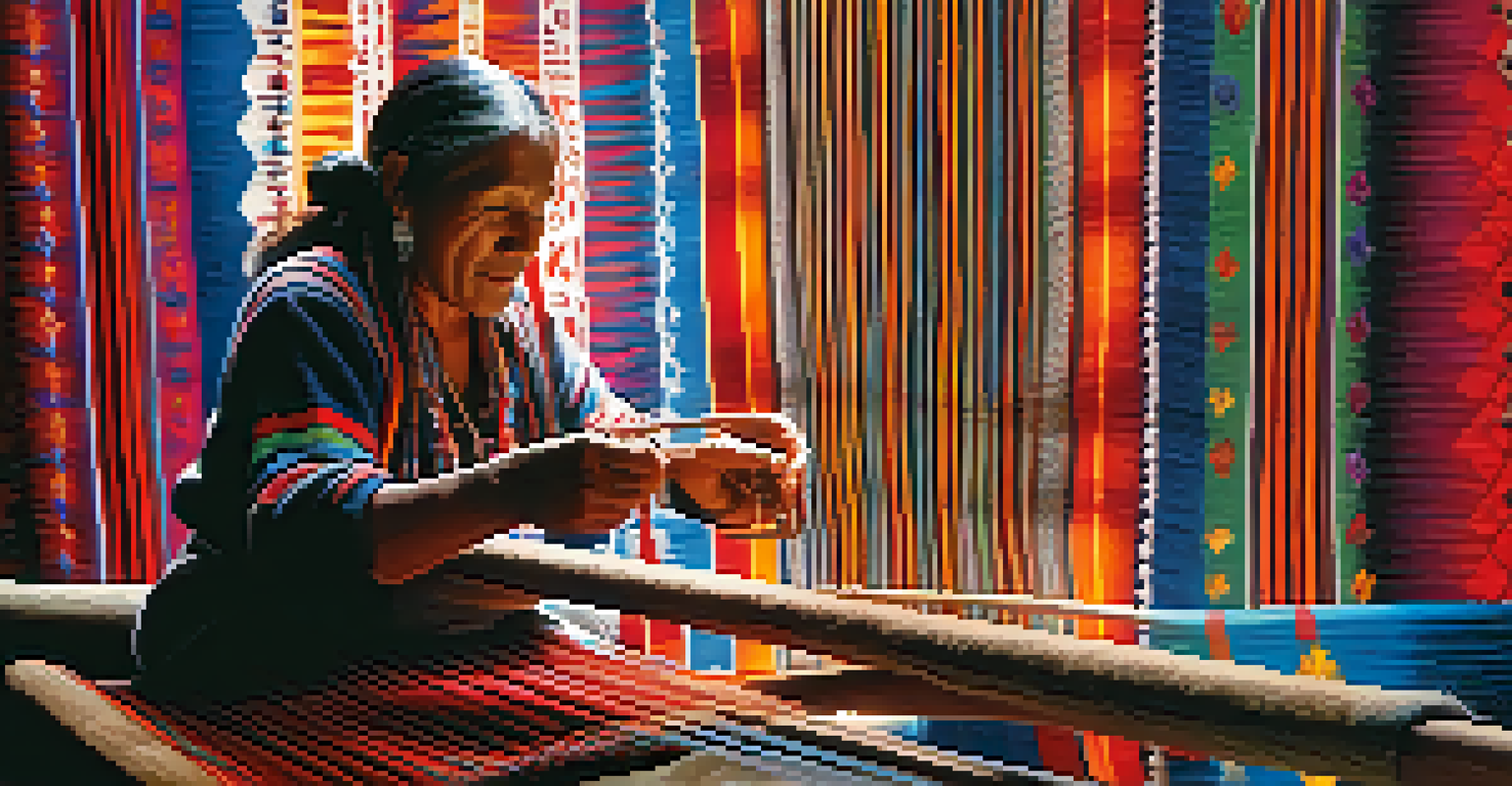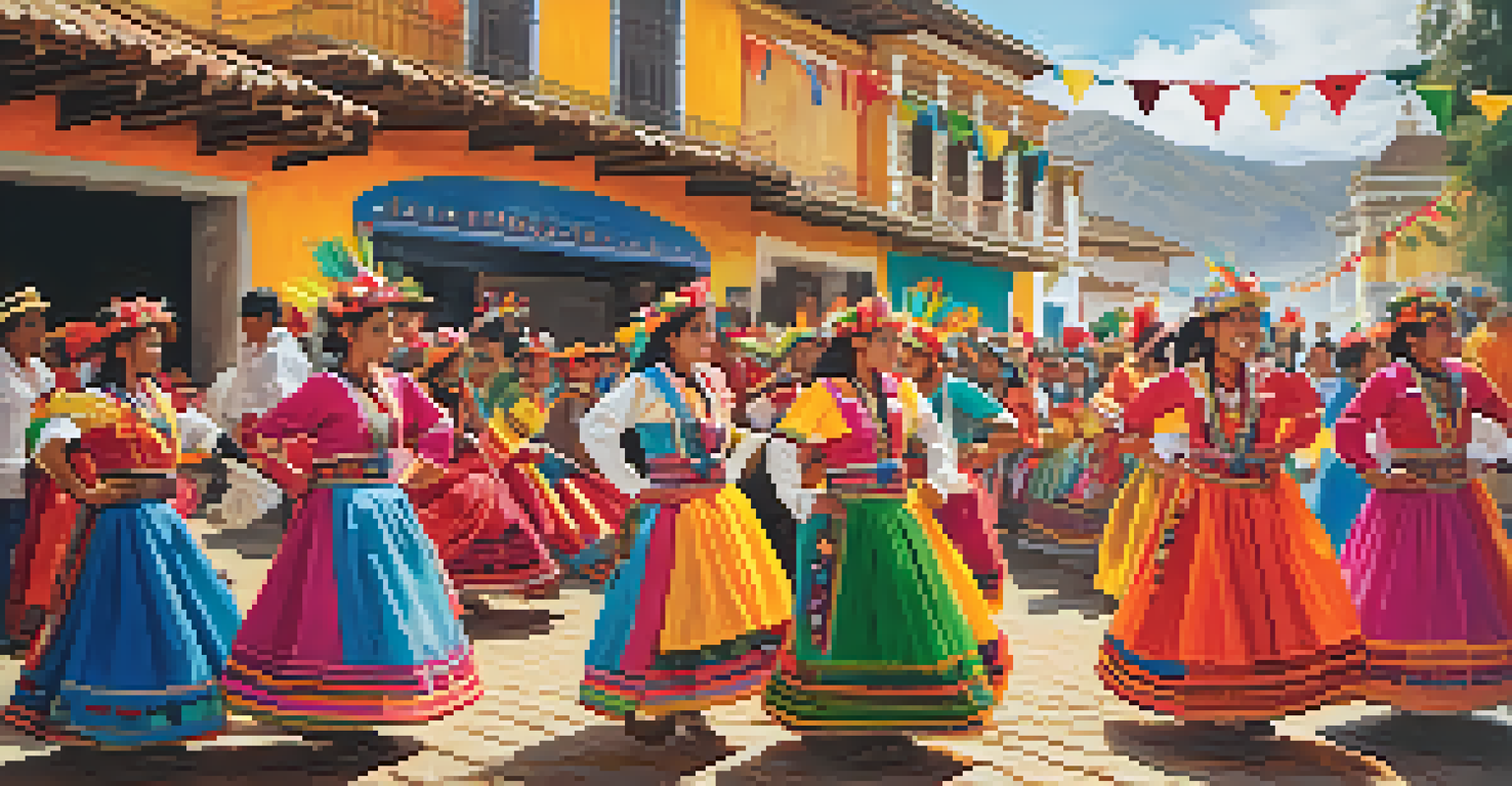UNESCO's Impact on the Preservation of Peruvian Heritage

Understanding UNESCO's Mission and Goals
UNESCO, the United Nations Educational, Scientific and Cultural Organization, aims to promote peace and security through international cooperation in education, the sciences, and culture. This mission is particularly crucial for countries like Peru, which boasts a rich tapestry of cultural heritage. By recognizing and protecting cultural sites, UNESCO plays a vital role in preserving the identity and history of nations.
Cultural heritage is the legacy of physical artifacts and intangible attributes of a group or society that are inherited from past generations, maintained in the present and bestowed for the benefit of future generations.
In Peru, the importance of this mission is evident, as the country is home to several UNESCO World Heritage Sites, including Machu Picchu and the Historic Center of Lima. These sites not only attract tourists but also serve as a testament to Peru’s historical significance and cultural diversity. UNESCO’s involvement ensures that these treasures are maintained for future generations.
Moreover, UNESCO's efforts extend beyond mere recognition; they involve active preservation initiatives. Through funding, expertise, and global awareness campaigns, UNESCO helps safeguard these sites from threats such as climate change, urbanization, and neglect.
The Significance of World Heritage Sites in Peru
World Heritage Sites are critical to a country’s cultural and natural heritage, and Peru is fortunate to have several, each telling a unique story. For instance, Machu Picchu is not just an archaeological marvel; it represents the ingenuity of the Inca civilization. Its designation as a UNESCO site has helped elevate its status globally, bringing attention to the need for its preservation.

Another example is the Chavin de Huantar archaeological site, which showcases the advanced architectural and artistic skills of early Peruvian societies. By classifying these sites as World Heritage, UNESCO highlights their universal value and encourages collaborative efforts for their conservation. This recognition fosters national pride and international respect for Peru's cultural narrative.
UNESCO's Role in Heritage Preservation
UNESCO actively promotes the recognition and preservation of Peru's cultural heritage through its World Heritage Sites, ensuring their protection for future generations.
The impact of these designations extends to local communities as well. Many communities around these heritage sites benefit from tourism, which can lead to economic opportunities and increased awareness of their cultural practices and traditions.
UNESCO's Role in Cultural Conservation Efforts
UNESCO engages in various cultural conservation projects in Peru, focusing on both tangible and intangible heritage. This includes the preservation of traditional crafts, music, and festivals that may be at risk of fading away. By supporting local artisans and cultural practitioners, UNESCO helps to sustain these age-old traditions.
Heritage is our legacy from the past, what we live with today, and what we pass on to future generations.
For example, initiatives aimed at revitalizing Andean textiles not only promote the craftsmanship but also engage younger generations in their cultural heritage. In this way, UNESCO not only preserves the physical aspects of culture but also fosters a sense of identity and continuity within communities.
Additionally, UNESCO collaborates with Peruvian authorities and NGOs to create educational programs that raise awareness about the importance of heritage. These programs aim to instill a sense of responsibility in locals regarding their cultural assets, ensuring that they are valued and protected.
Challenges Facing Peru's Cultural Heritage
Despite the positive impact of UNESCO, Peru’s cultural heritage faces several challenges. Issues such as urban development, environmental degradation, and illicit trafficking of artifacts threaten the integrity of these sites. For instance, construction projects near archaeological sites can lead to irreversible damage, making preservation efforts all the more urgent.
Moreover, climate change poses a significant risk to many sites, particularly those situated in vulnerable environments. Rising temperatures and extreme weather events can erode ancient structures and disrupt the ecosystems that sustain them. Addressing these threats requires coordinated efforts from both local and international stakeholders.
Challenges to Peru's Cultural Heritage
Peru's cultural heritage faces significant threats from urban development, climate change, and illicit trafficking, necessitating urgent preservation efforts.
UNESCO’s role becomes crucial in such contexts, as it mobilizes resources and expertise to tackle these challenges. By raising awareness about the vulnerabilities of these sites, UNESCO encourages proactive measures to mitigate risks and safeguard Peru's heritage.
Community Involvement in Heritage Preservation
Local communities play an essential role in the preservation of Peru's heritage, and UNESCO emphasizes the importance of grassroots involvement. Engaging communities not only fosters a sense of ownership over cultural assets but also ensures that preservation efforts are sustainable and culturally relevant. Local knowledge and practices can significantly enhance conservation strategies.
For instance, community-led initiatives in Cusco have successfully integrated traditional agricultural practices with modern conservation techniques, demonstrating that local wisdom can be an invaluable resource. These collaborative efforts often lead to innovative solutions that respect both the environment and cultural traditions.
UNESCO supports these initiatives by providing training and resources, helping communities to develop their capacity for managing heritage sites. This collaborative approach not only preserves Peru's heritage but also empowers communities, creating a win-win situation.
The Future of Peru's Heritage Under UNESCO's Guidance
Looking ahead, the future of Peru's heritage appears promising with UNESCO's ongoing involvement. As new threats emerge, UNESCO continues to adapt its strategies to ensure the effective preservation of cultural sites. This adaptability is crucial in a world where cultural heritage is increasingly at risk from globalization and climate change.
Additionally, the integration of technology in preservation efforts offers new possibilities. From digital mapping of archaeological sites to virtual reality experiences that educate the public about heritage, innovative approaches can enhance appreciation and engagement. UNESCO encourages such technological advancements, recognizing their potential to broaden the reach of cultural preservation.
Community Involvement is Essential
Engaging local communities in heritage preservation fosters ownership and ensures that conservation efforts are sustainable and culturally relevant.
Ultimately, the partnership between UNESCO and Peru lays a foundation for a resilient future, where heritage is not only preserved but celebrated. By fostering a culture of respect and appreciation for cultural assets, Peru can ensure that its rich heritage continues to thrive for generations to come.
Conclusion: The Lasting Impact of UNESCO in Peru
In conclusion, UNESCO's impact on the preservation of Peru's heritage is profound and multi-faceted. Through its recognition of World Heritage Sites, support for cultural conservation, and emphasis on community involvement, UNESCO has established a framework for sustainable heritage management. This collaborative approach not only protects tangible sites but also nurtures the intangible aspects of culture that define Peru.
As we reflect on the ongoing challenges and successes, it is clear that a strong partnership between local communities and UNESCO is essential. Together, they can navigate the complexities of heritage preservation in a rapidly changing world, ensuring that Peru's unique cultural identity remains vibrant and intact.

The continued commitment to preserving Peru's heritage not only benefits the nation but also enriches our shared global culture. As we move forward, let us honor and protect the stories that define us, making sure that future generations can enjoy and learn from the richness of Peru's cultural legacy.